Misperceived Discrimination
The Two Proximate Causes of Over- and Underperceived Ethnic Discrimination
Merlin Schaeffer & Judith Kas
2021-11-10
The integration paradox
[...] greater familiarity with the culture and language and economic advancement can lead to greater consciousness of the reality of discrimination.
-- Portes, Parker, and Cobas (1980)
The integration paradox
[...] greater familiarity with the culture and language and economic advancement can lead to greater consciousness of the reality of discrimination.
-- Portes, Parker, and Cobas (1980)
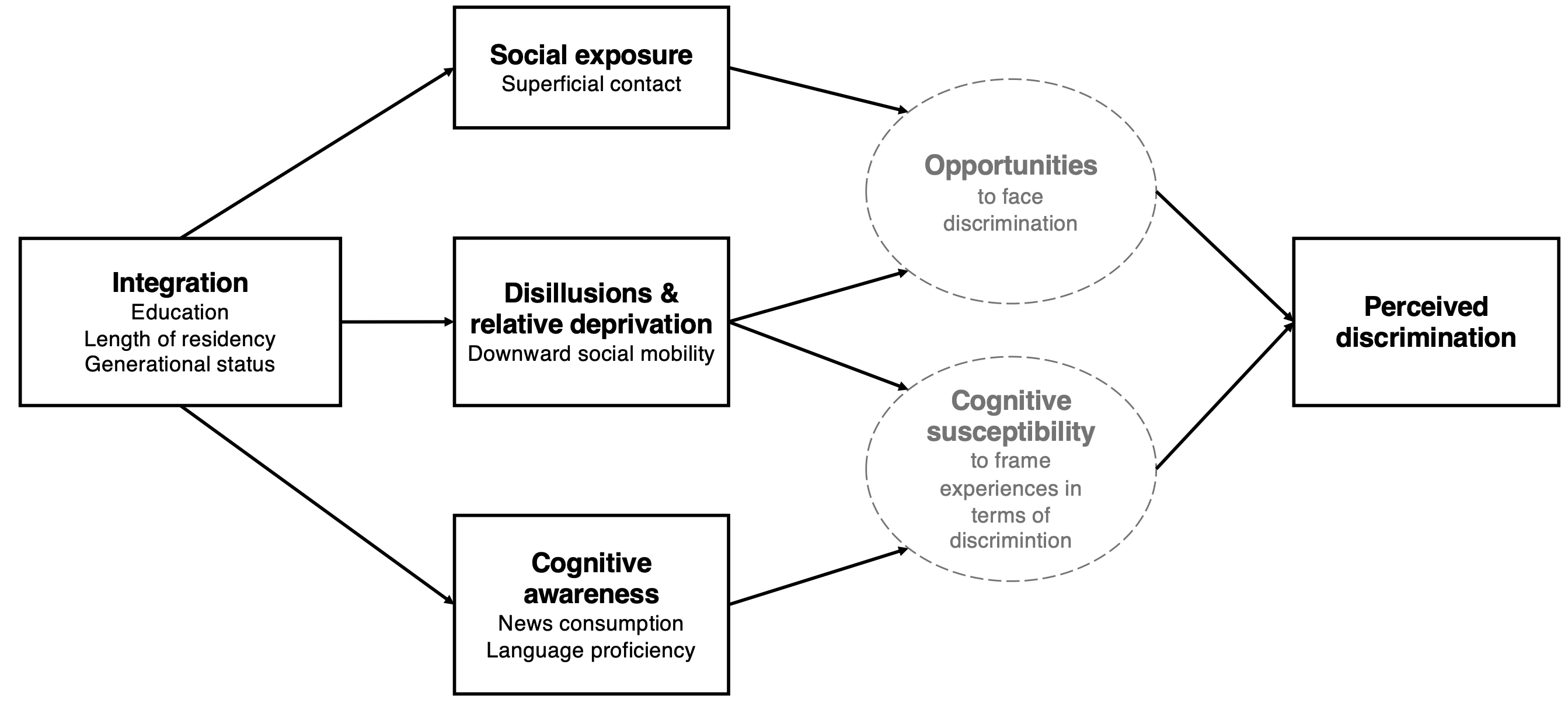 Source: Schaeffer and Kas (2021)
Source: Schaeffer and Kas (2021)
Step 1 Online survey
| Var1 | Freq |
|---|---|
| Mainstream | 1356 |
| Immigrant | 890 |
| Child of immigrant | 595 |
- Random sample from public registers of:
- Berlin,
- Hamburg,
- Cologne,
- Frankfurt,
- Munich.
- Invitation to study via postal mail.
- Response rate approx. 8%.

Fundamental flaw of prior research
[...] greater familiarity with the culture and language and some economic advancement can lead to greater consciousness of the reality of discrimination.
-- Portes, Parker, and Cobas (1980)
Fundamental flaw of prior research
[...] greater familiarity with the culture and language and some economic advancement can lead to greater consciousness of the reality of discrimination.
-- Portes, Parker, and Cobas (1980)
False Consciousness: Are the less integrated under-perceiving the true extent of discrimination they face?
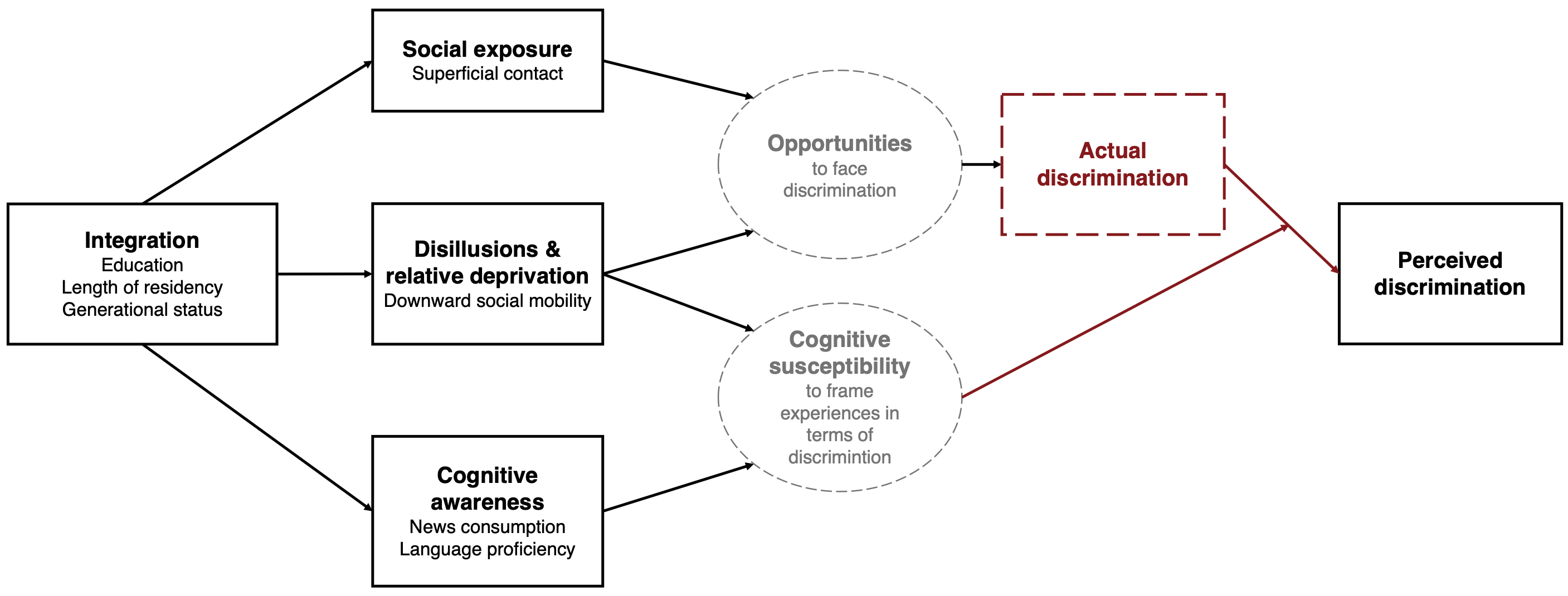
Limitation of correspondence studies
Fake CV's
have no experiences and perceptions
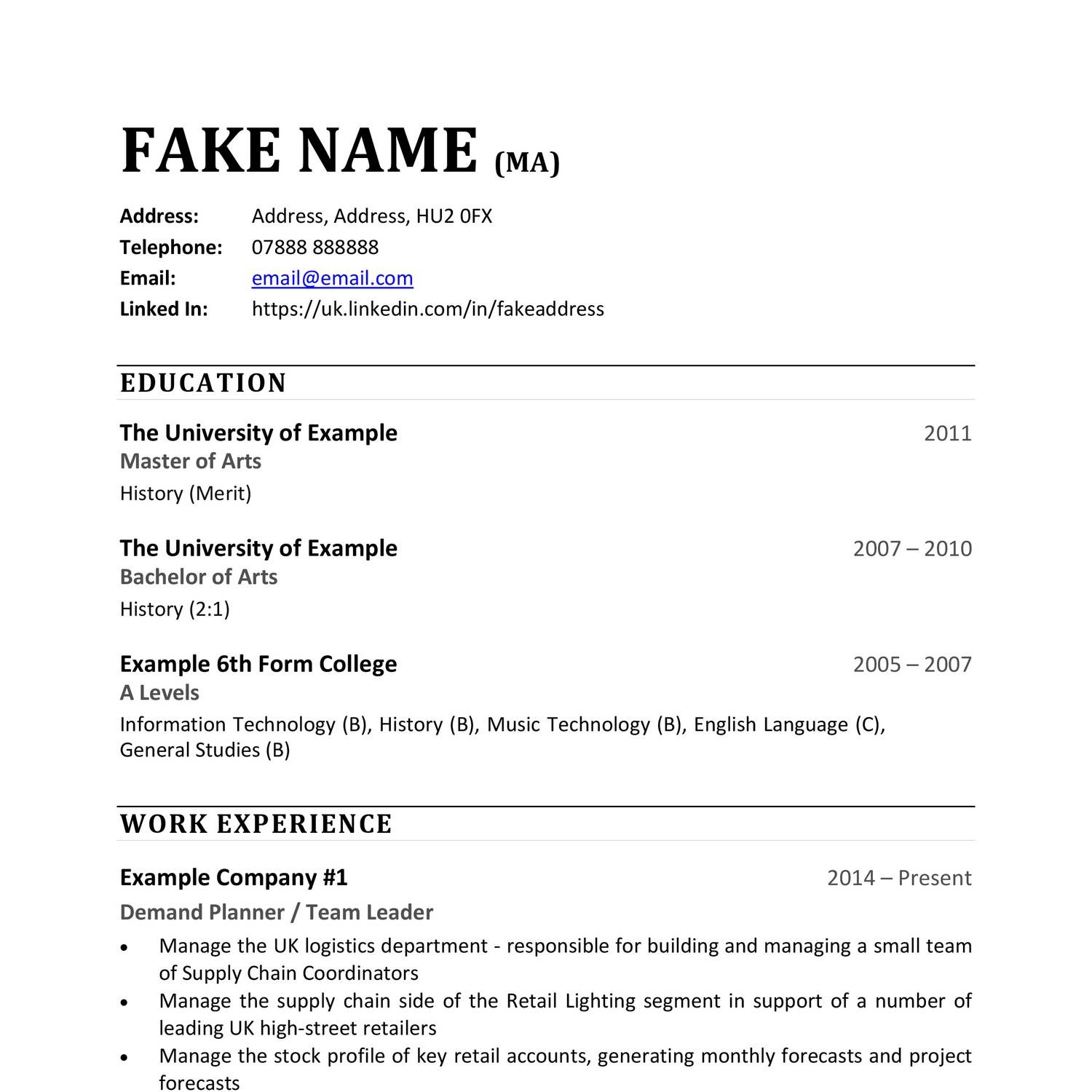
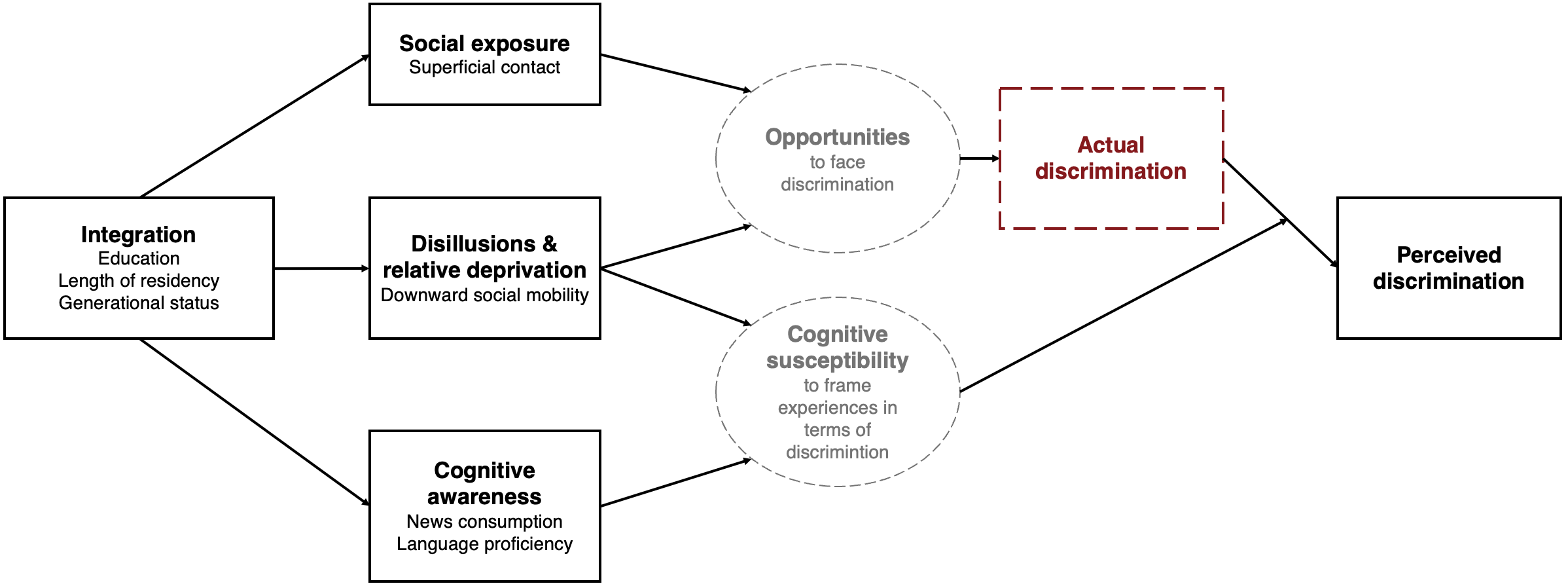
Additional demands for a new design
You need 16 times the sample size to estimate an interaction than to estimate a main effect

Additional demands for a new design
You need 16 times the sample size to estimate an interaction than to estimate a main effect
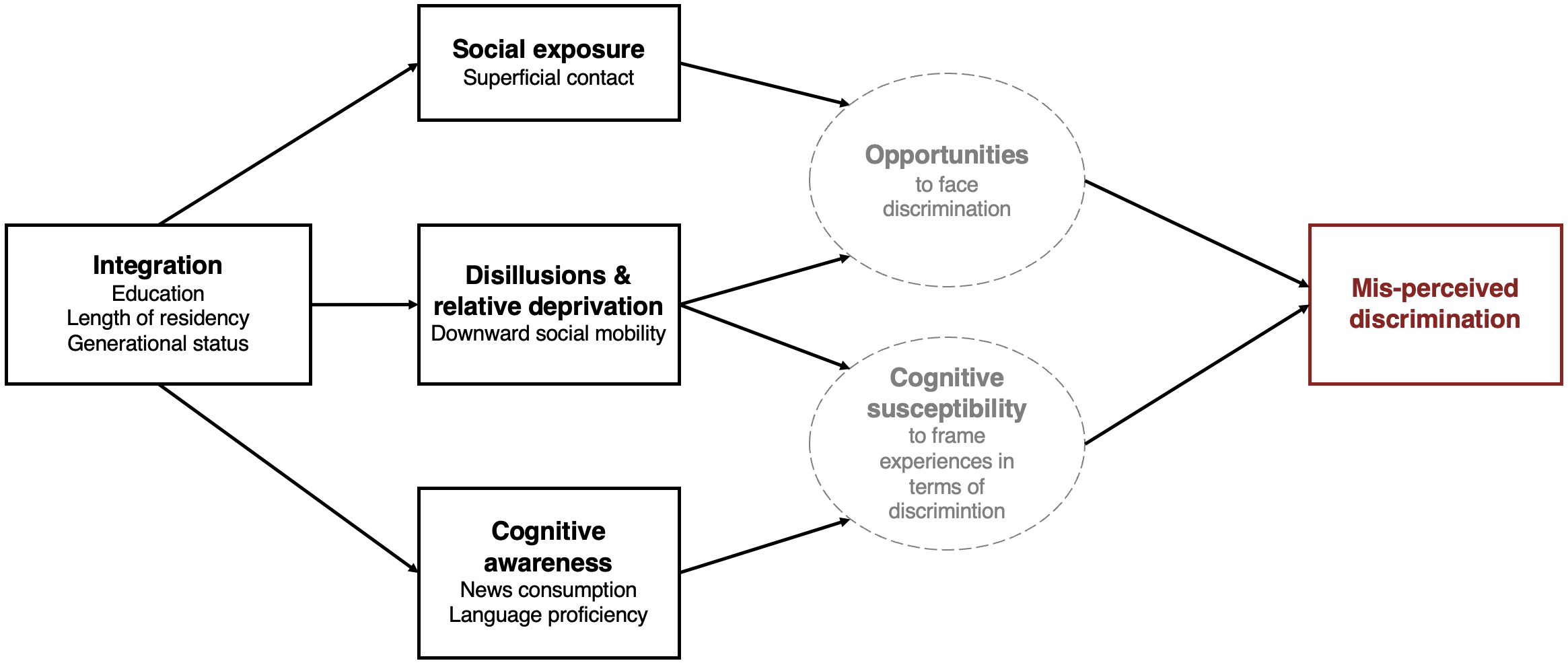
Additional demands Decomposition into two proximate causes

Additional demands Decomposition into two proximate causes
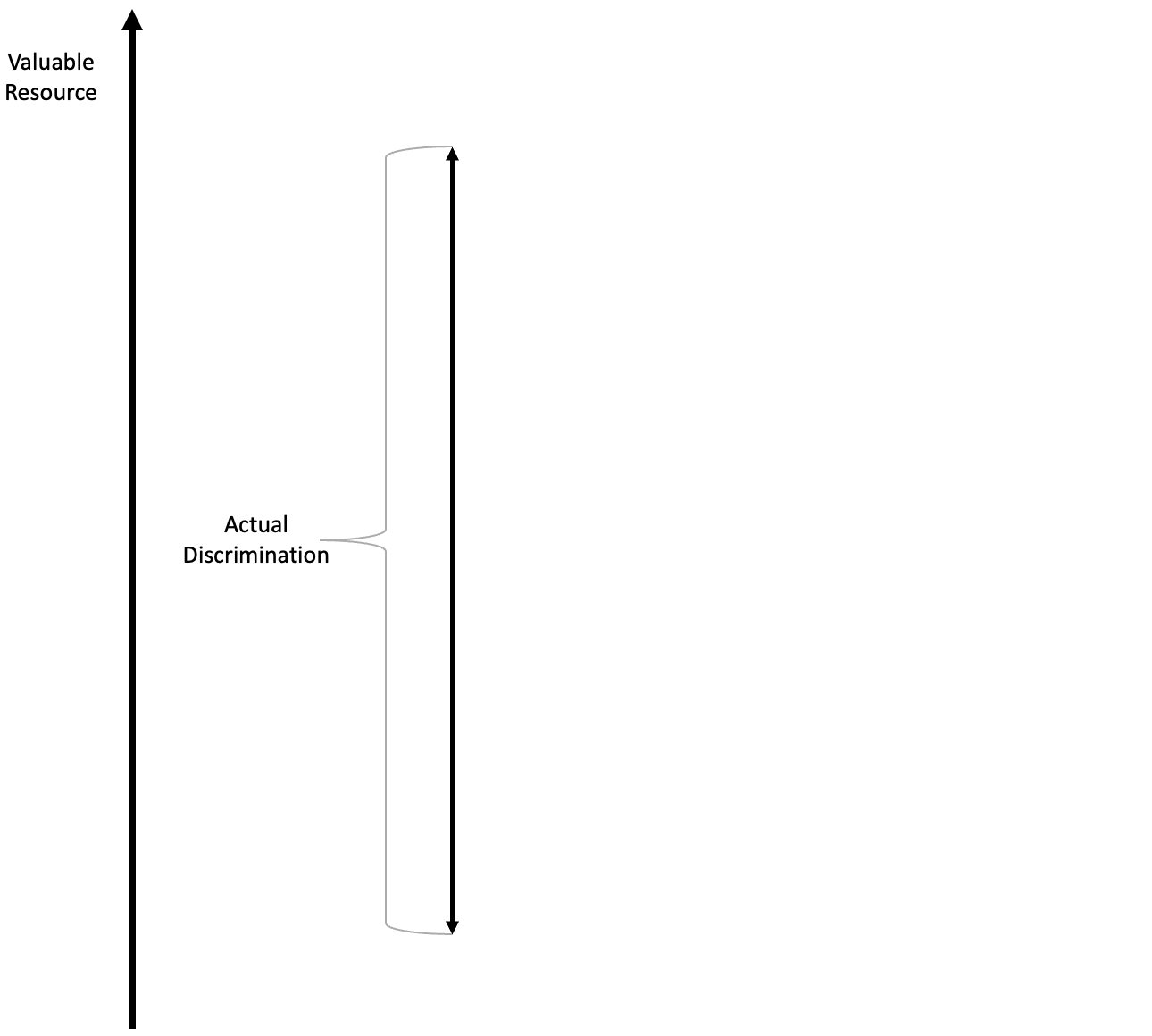
Additional demands Decomposition into two proximate causes
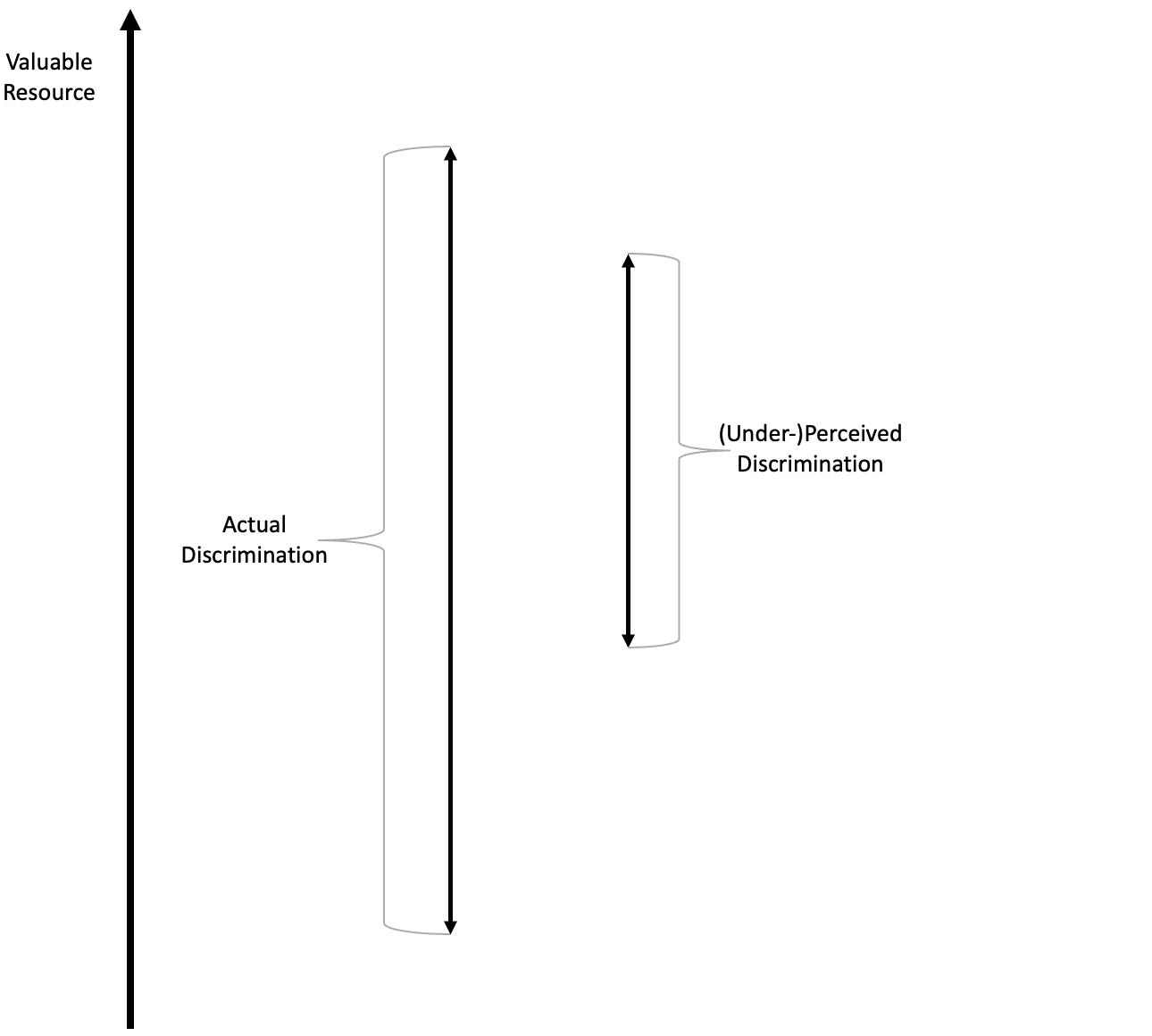
Additional demands Decomposition into two proximate causes
Misperception of how poorly /well You are being treated.
- You have it worse/better than you think.
Misperception of how well /poorly mainstream members are being treated.
- Mainstream members have it better/worse than you think.
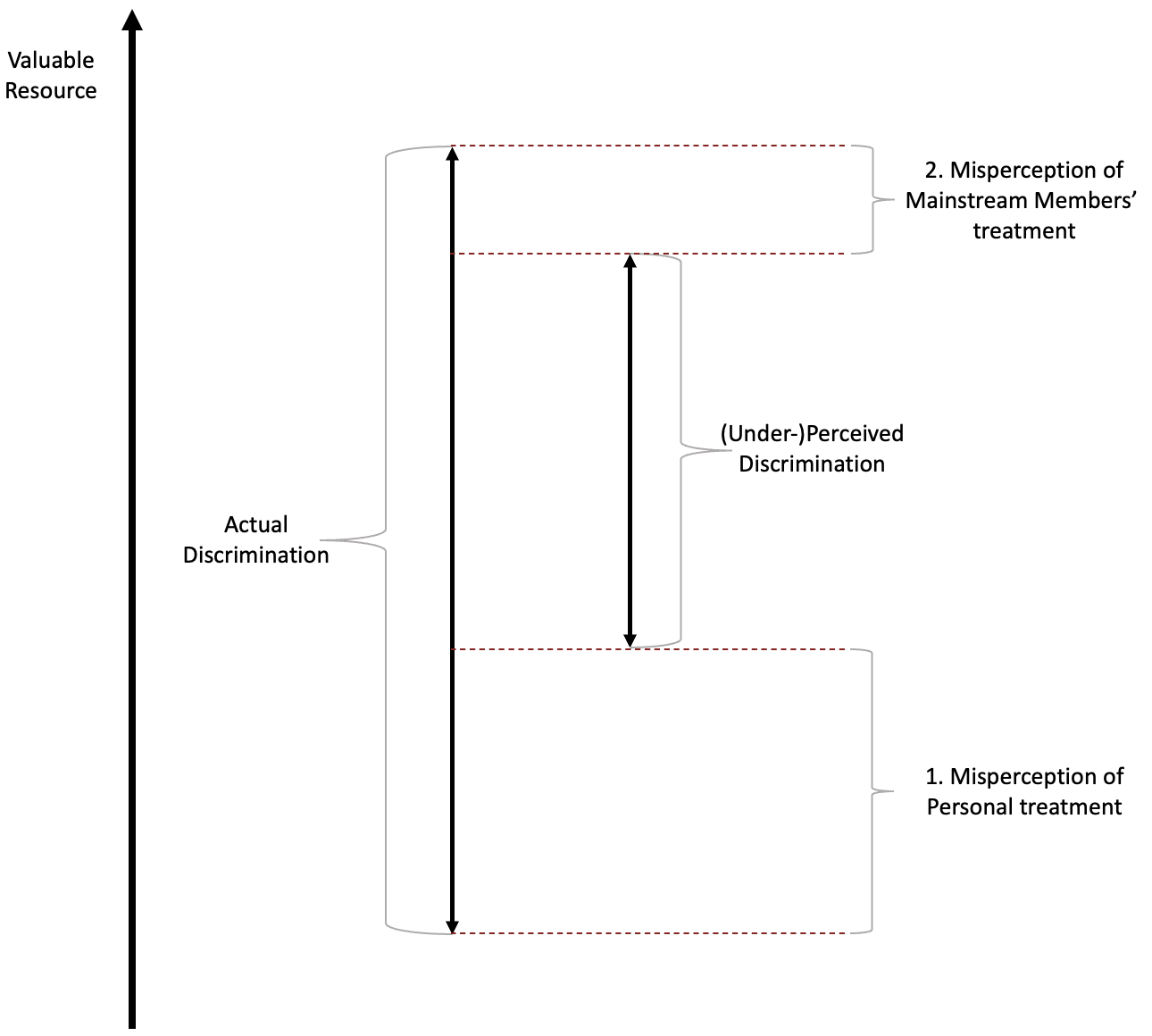
Central idea Mutual evaulation in behavioral games
- Revolve around two players mutual evaluation.
- Have a clear metric: €
→ Observe actual & survey expected discrimination in €.
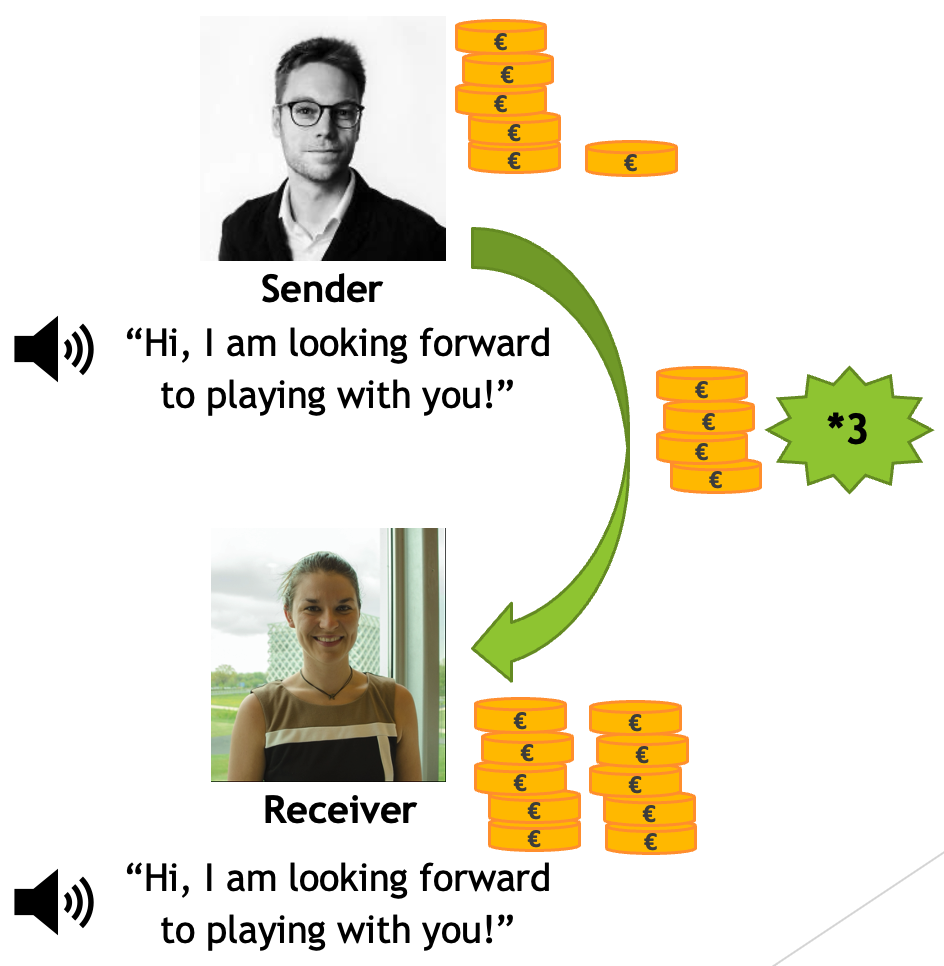
Step 2: 10 Trust games among 2.000 of our respondents

Mainstream participants: 3 Games with mainstream & 7 with immigrant origin players.
Immigrant origin participants: 7 Games with mainstream & 3 with immigrant origin players.
Step 2: 10 Trust games among 2.000 of our respondents

True first name & city of residence from registers
Alisina, Ahmad, Anne, Binyamin, Joyce, Somaia, Sarah, Hayriye, Saibe, Björn, Salem, Fabienne, Sadet, Linda, Margarita, Ali, Joseph, Mhd Kheir, Baran, Bahaa, Jebran, Reno, Seiji, Irina, Ajsel, Christine, Rahim, Yaw Abrefa, Mark, Anjali Dev, Elmar, Anke, Laura, Heiko, ...
Actual trust to immigrant origin participants (current n = 281)


Actual trust to immigrant origin participants (current n = 281)



Actual trust to 9 others
Tr othersij=¯€|ij=¯€j−€ij


Actual (mistrust-based) discrimination per game
Act Discrij=€ij−¯€|ij


Actual discrimination averaged per person
¯Act Discri=nj∑j=1Act Discrijnj


After the 10 games Perceptions\Expectations

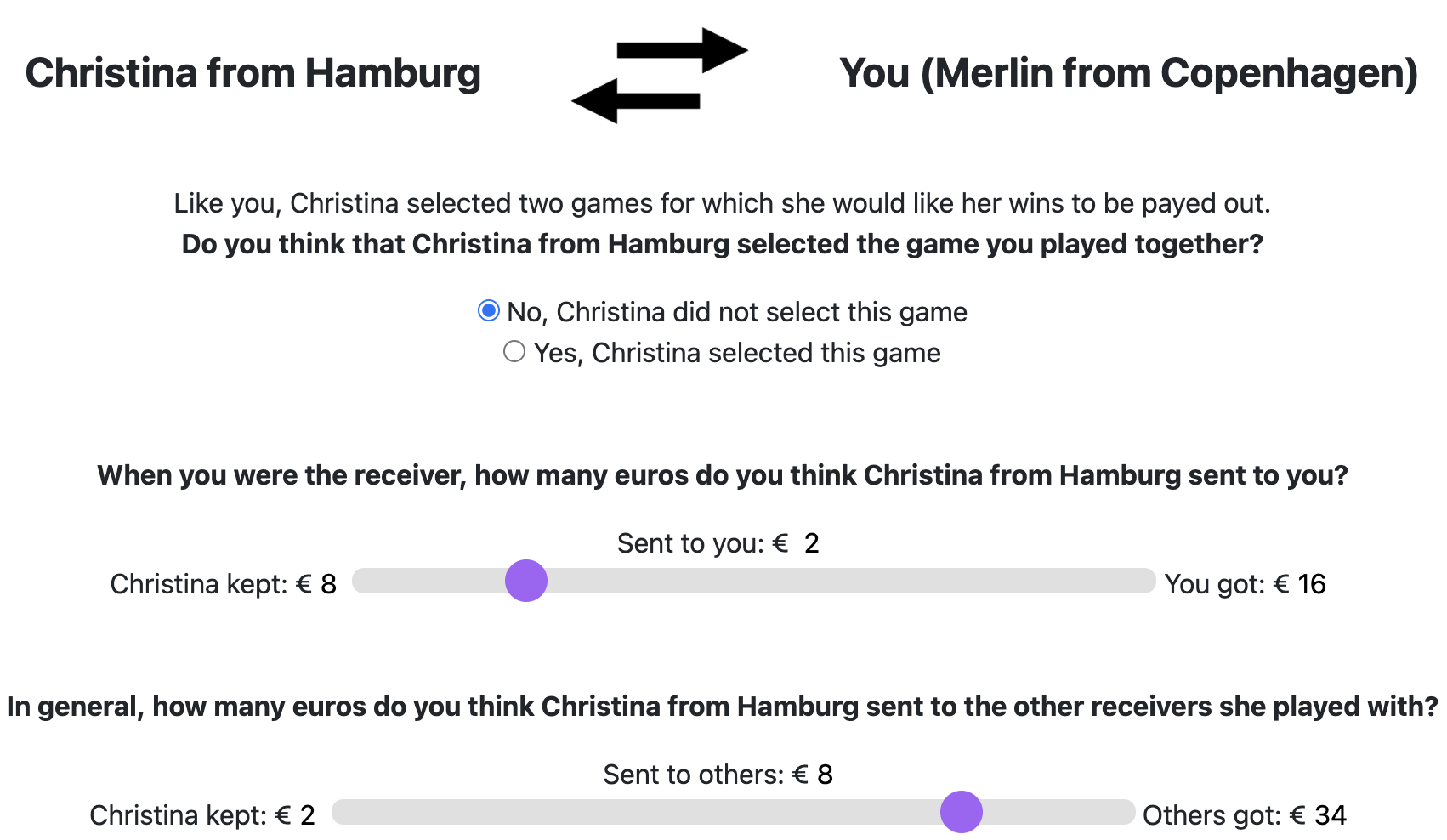
Perceived/Expected Discrimination per game
Perc Discrij=E(€ij)−E(¯€|ij)


Perceived/Expected Discrimination averaged per person
¯Perc Discri=10∑j=1E(€ij)−E(¯€|ij)10


Misperceived (Mistrust-Based) Discrimination
Misp Discri=¯Perc Discri−¯Act Discri

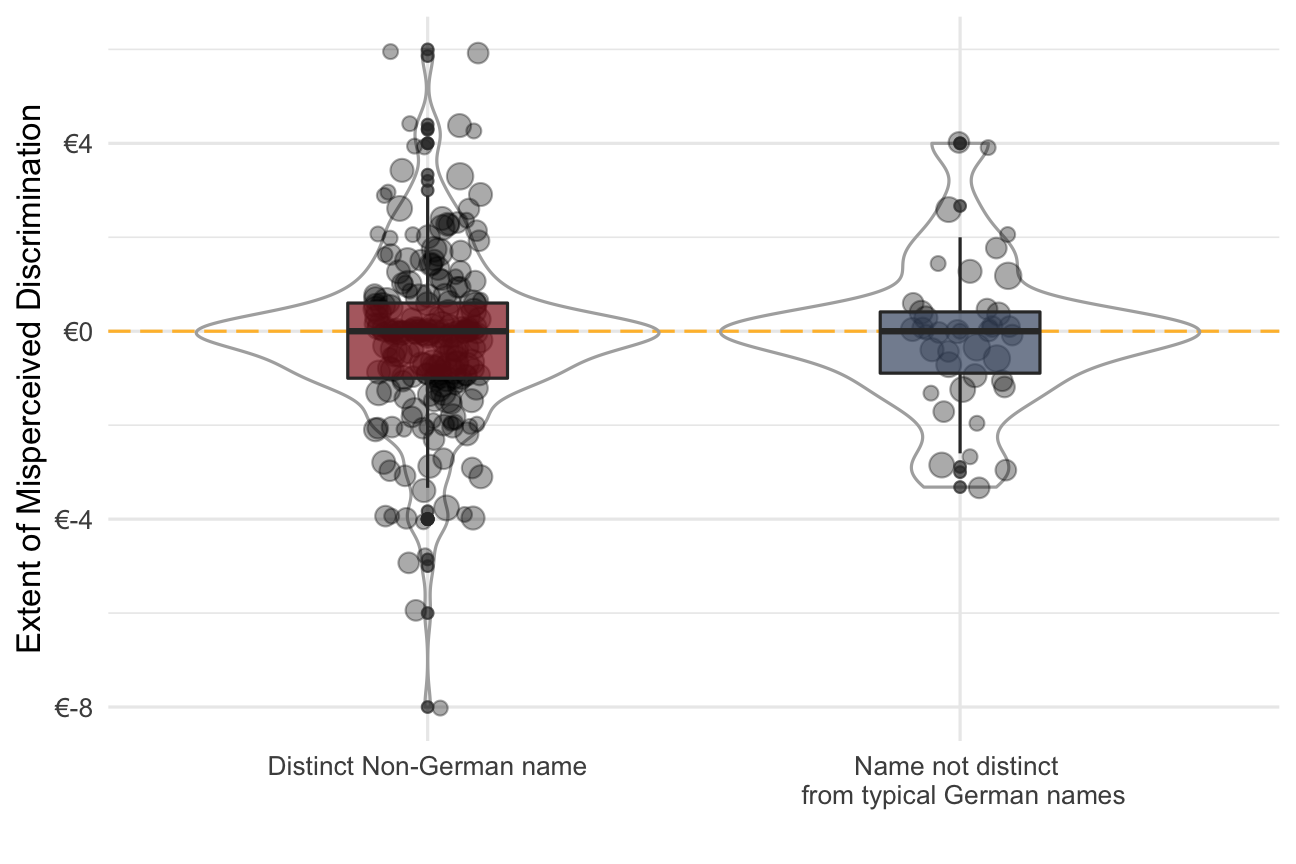
Decomposition into two proximate causes
The Case of Under-Perceived Discrimination
Misp Pers Tr={¯Perc. Tri−¯Act Triif Misp Pers Tr>00if Misp Pers Tr≤0.
%Misp Pers={−100∗Misp Pers TrMisp Discriif %Misp Pers<100100if %Misp Pers≥100.
Misp Oth Tr={¯Perc Tr Othi−¯Act Tr Othiif Misp Oth Tr<00if Misp Oth Tr≥0.
%Misp Oth={−100∗Misp Oth TrMisp Discriif %Misp Oth<100100if %Misp Oth≥100.

Decomposition into two proximate causes
The Case of Under-Perceived Discrimination
Misp Pers Tr={¯Perc. Tri−¯Act Triif Misp Pers Tr>00if Misp Pers Tr≤0.
%Misp Pers={−100∗Misp Pers TrMisp Discriif %Misp Pers<100100if %Misp Pers≥100.
Misp Oth Tr={¯Perc Tr Othi−¯Act Tr Othiif Misp Oth Tr<00if Misp Oth Tr≥0.
%Misp Oth={−100∗Misp Oth TrMisp Discriif %Misp Oth<100100if %Misp Oth≥100.
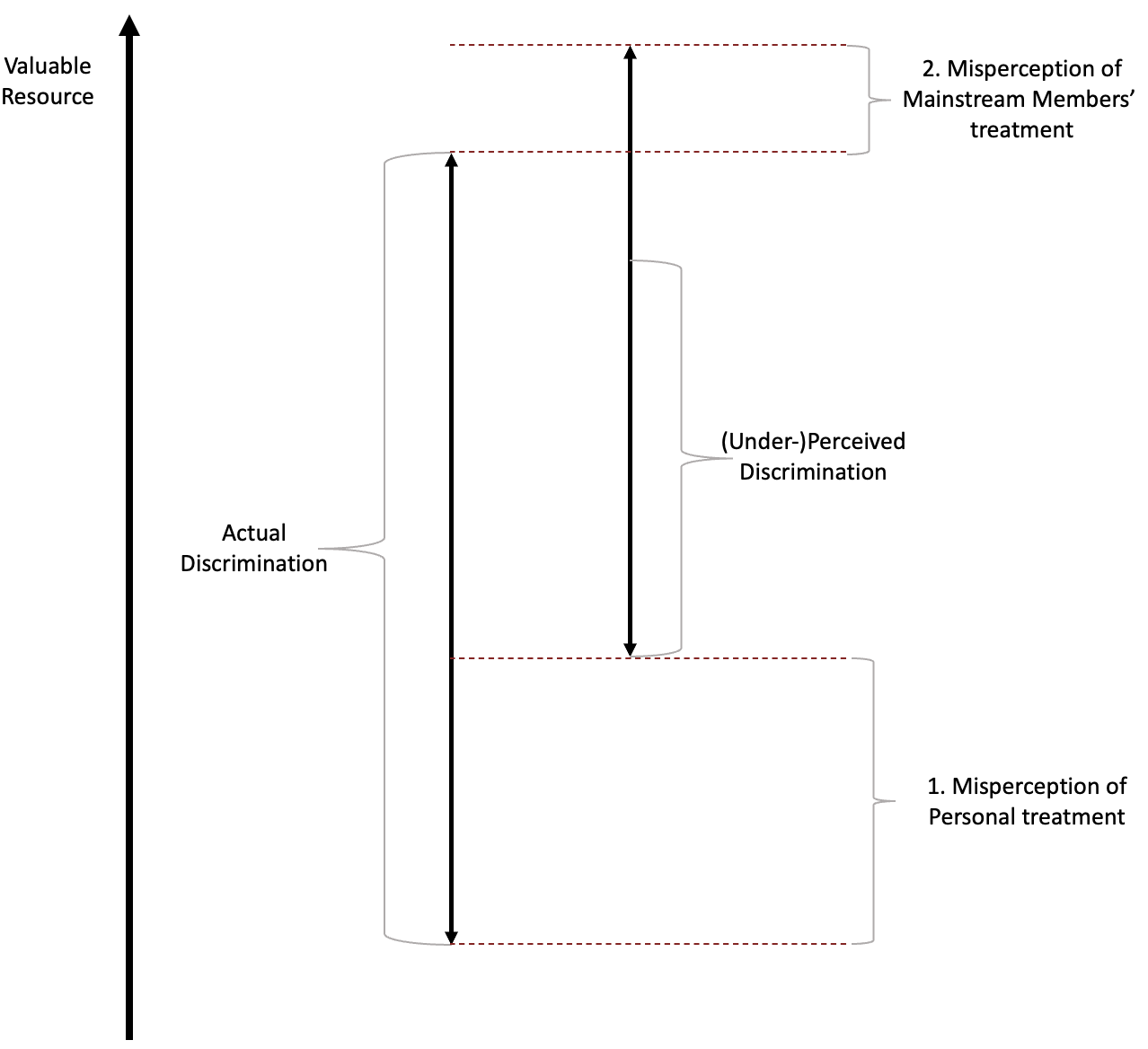
Decomposition into two proximate causes
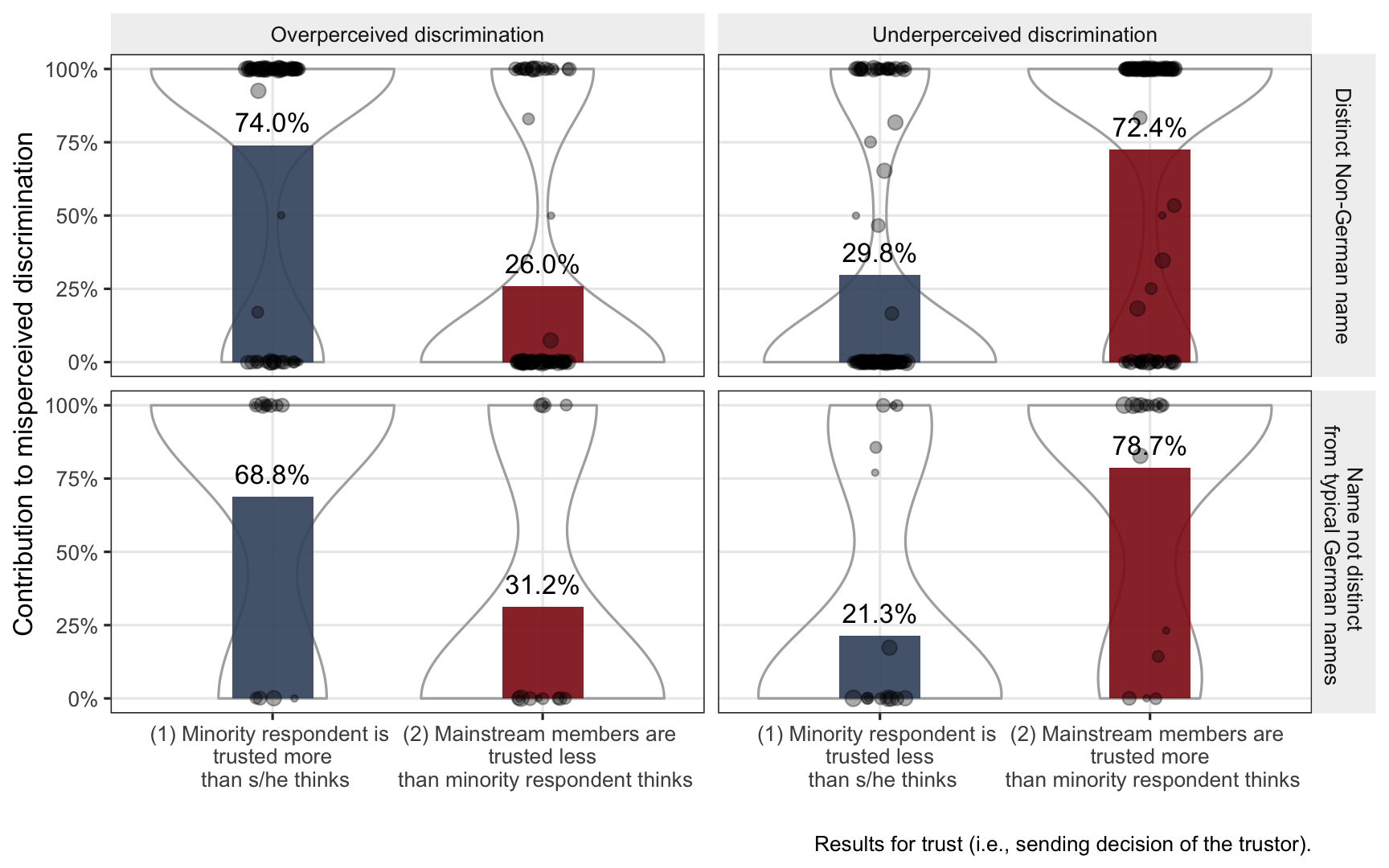
Next steps Reciprocity & Trust-Based Selection
Replicate for misperceived reciprocity-based discrimination.
Next steps Reciprocity & Trust-Based Selection
Replicate for misperceived reciprocity-based discrimination.

Next steps Integration Paradox
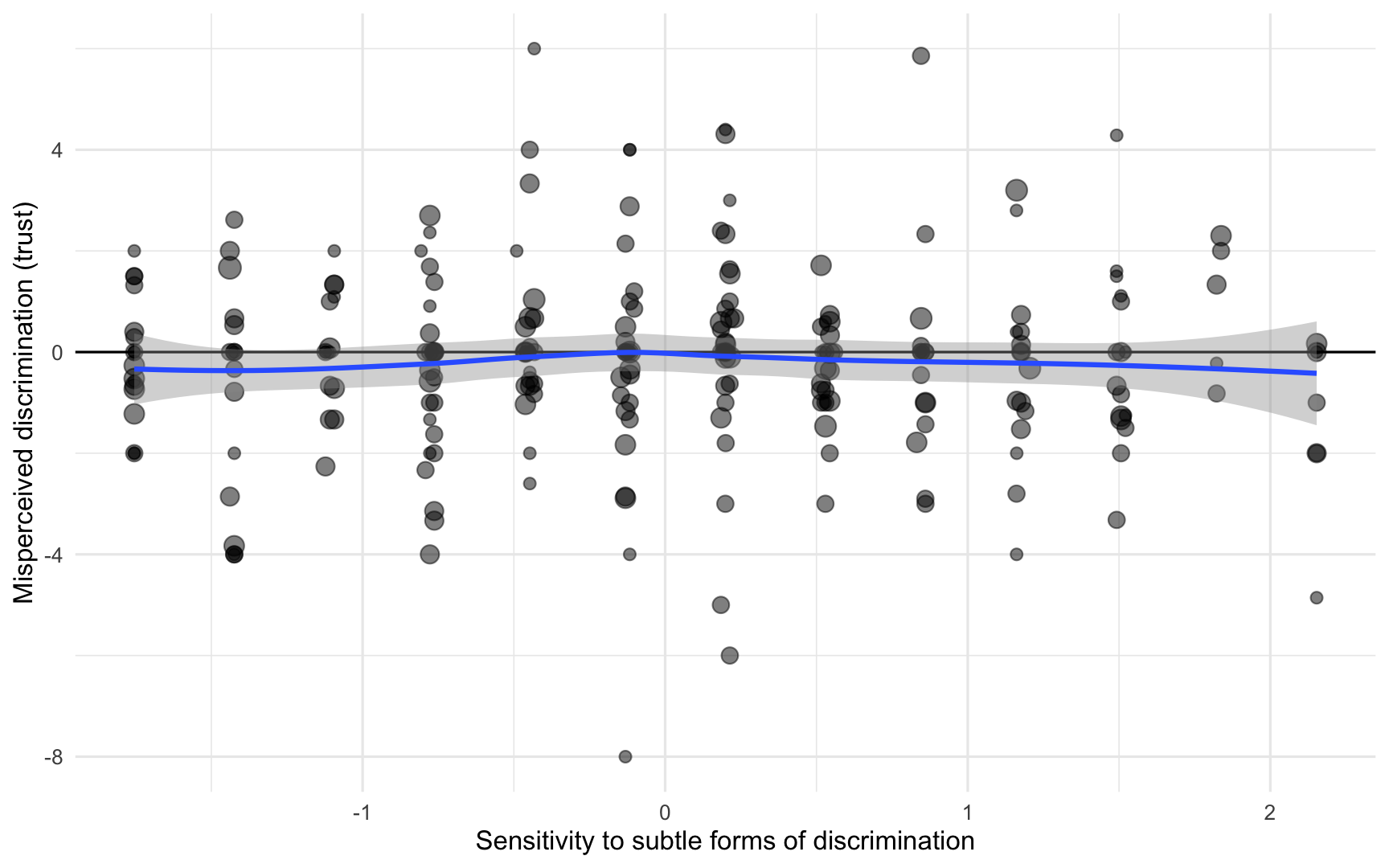
Satisficing?
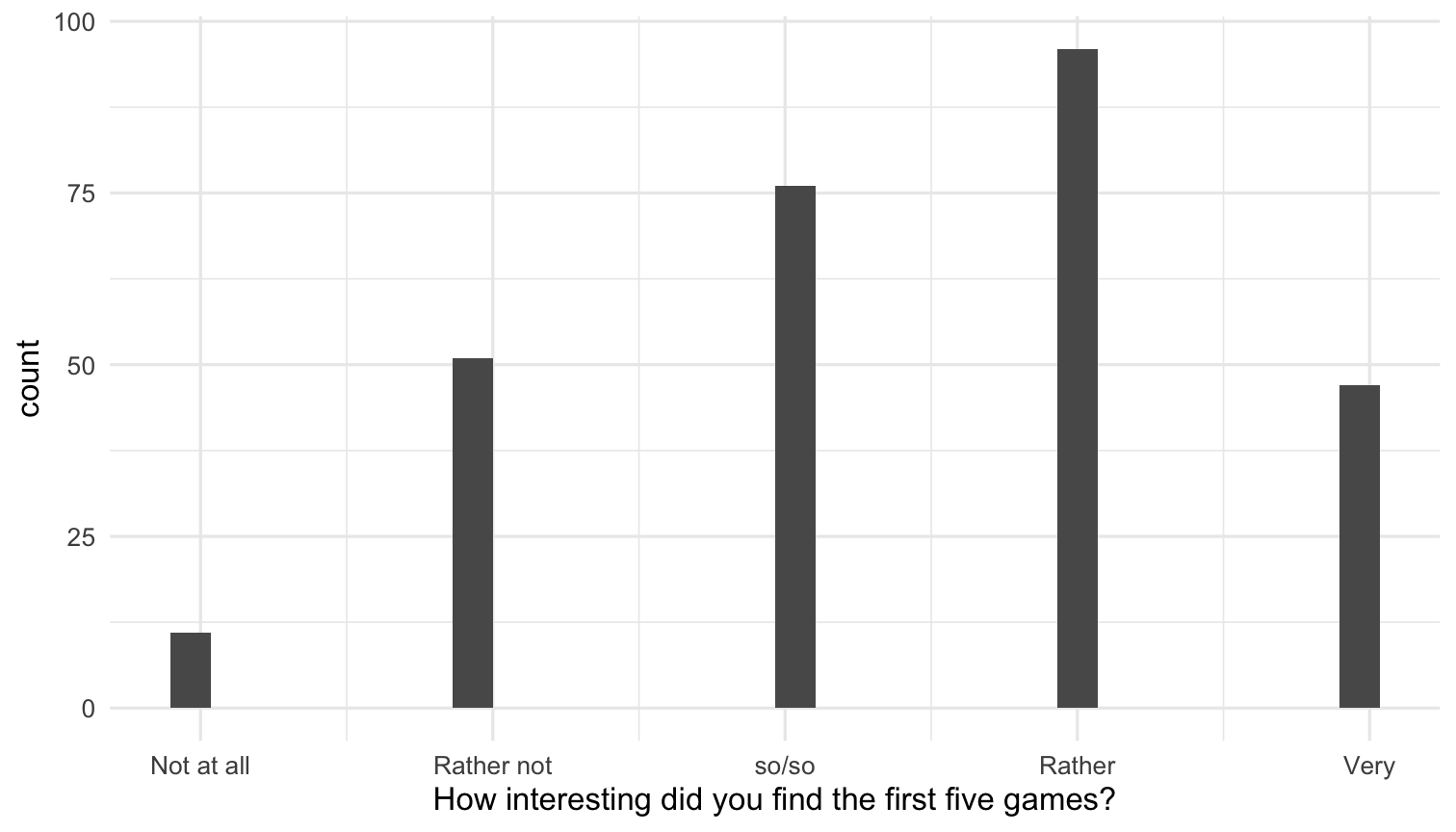
Final step 3 Scheduled for end of January
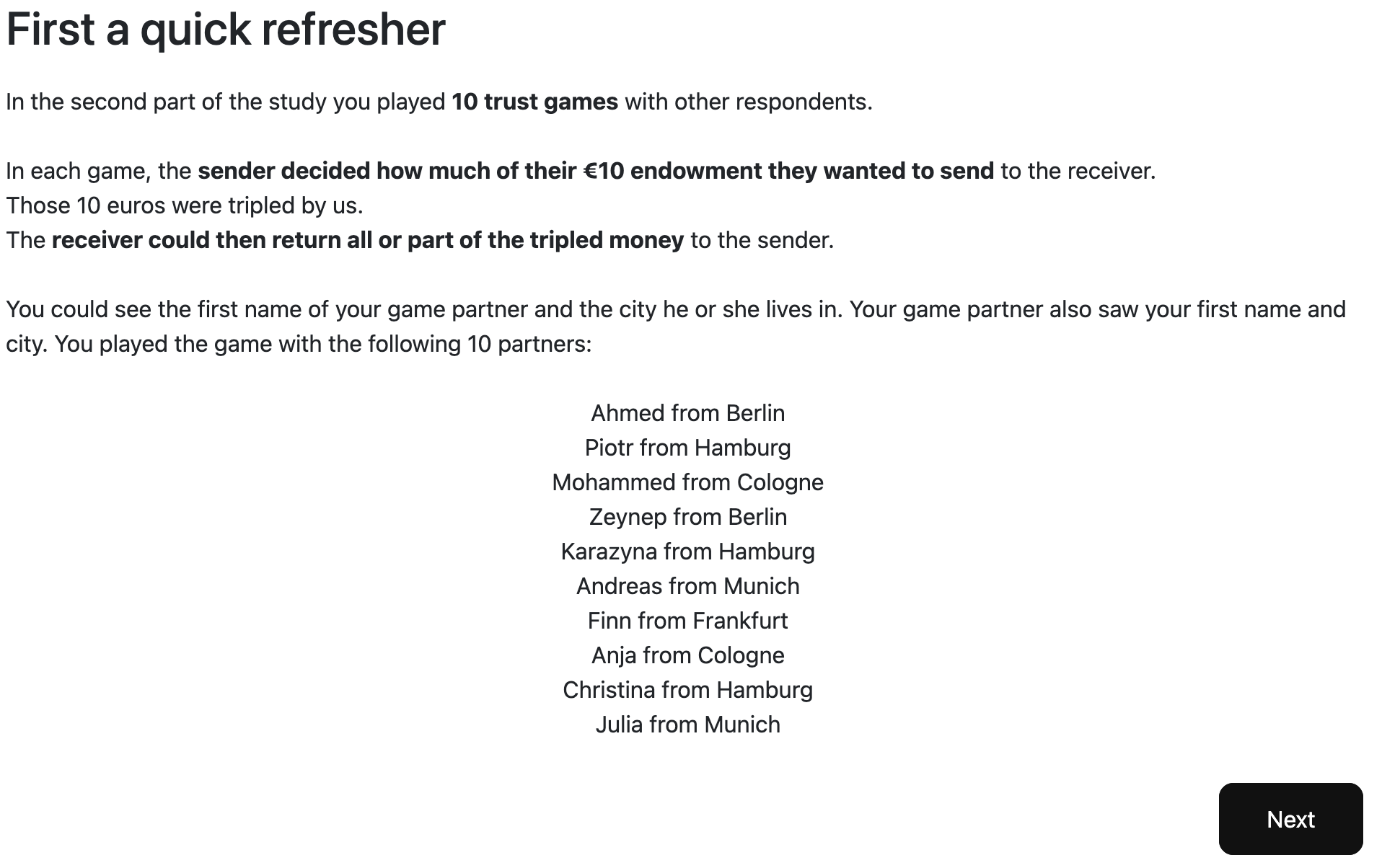
Final step 3 Scheduled for end of January
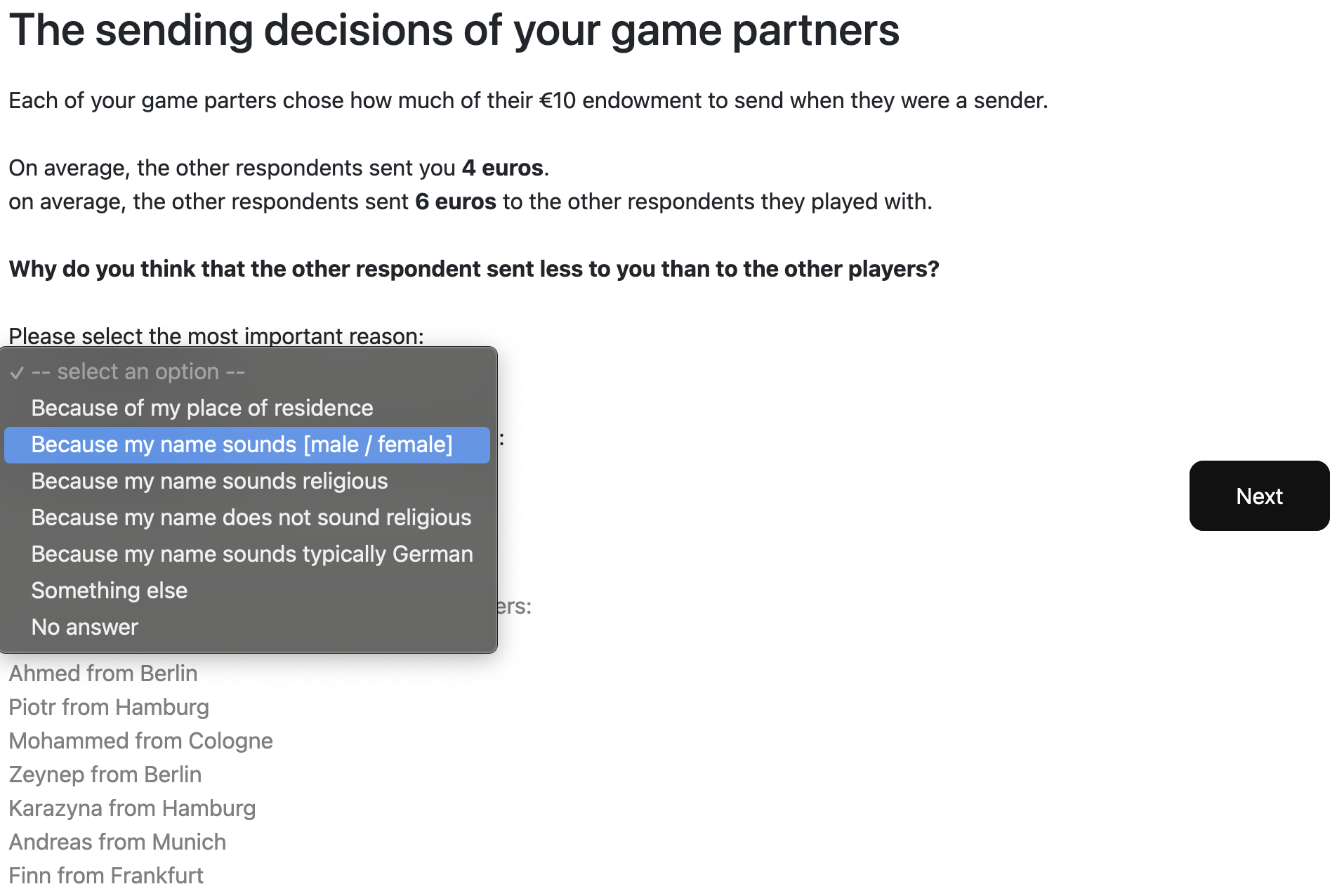
Final step 3 Scheduled for end of January
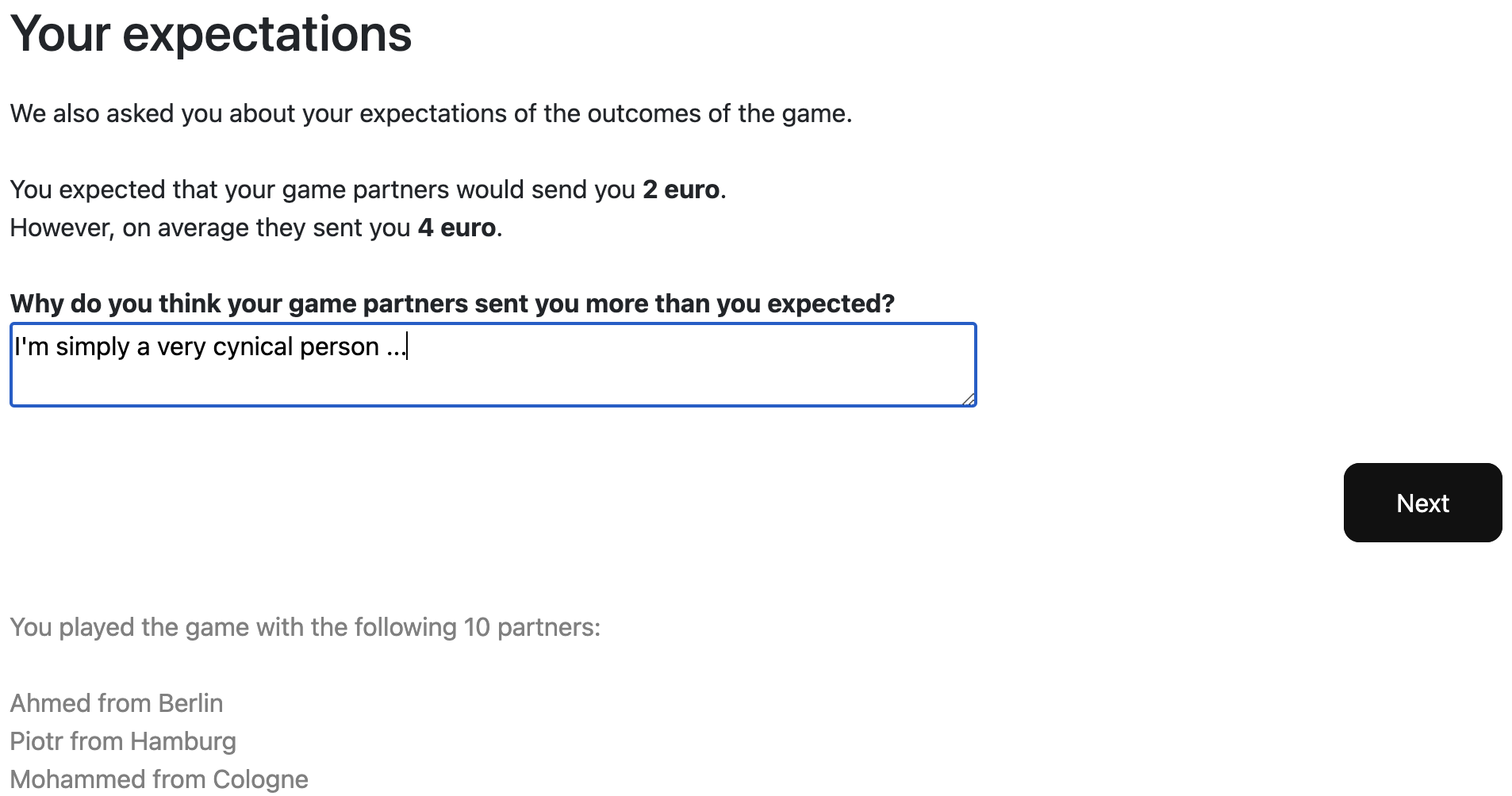
Thank you for your attention!
Please contact us,
if you have alternative ideas on how these data can be used
References
Portes, A., R. N. Parker, and J. A. Cobas (1980). "Assimilation or Consciousness". In: Social Forces, pp. 200-224.
Schaeffer, M. and J. Kas (2021). "The Integration Paradox: A Theoretical Synthesis and Meta-Analysis". In: Unpublished manuscript, p. 0.